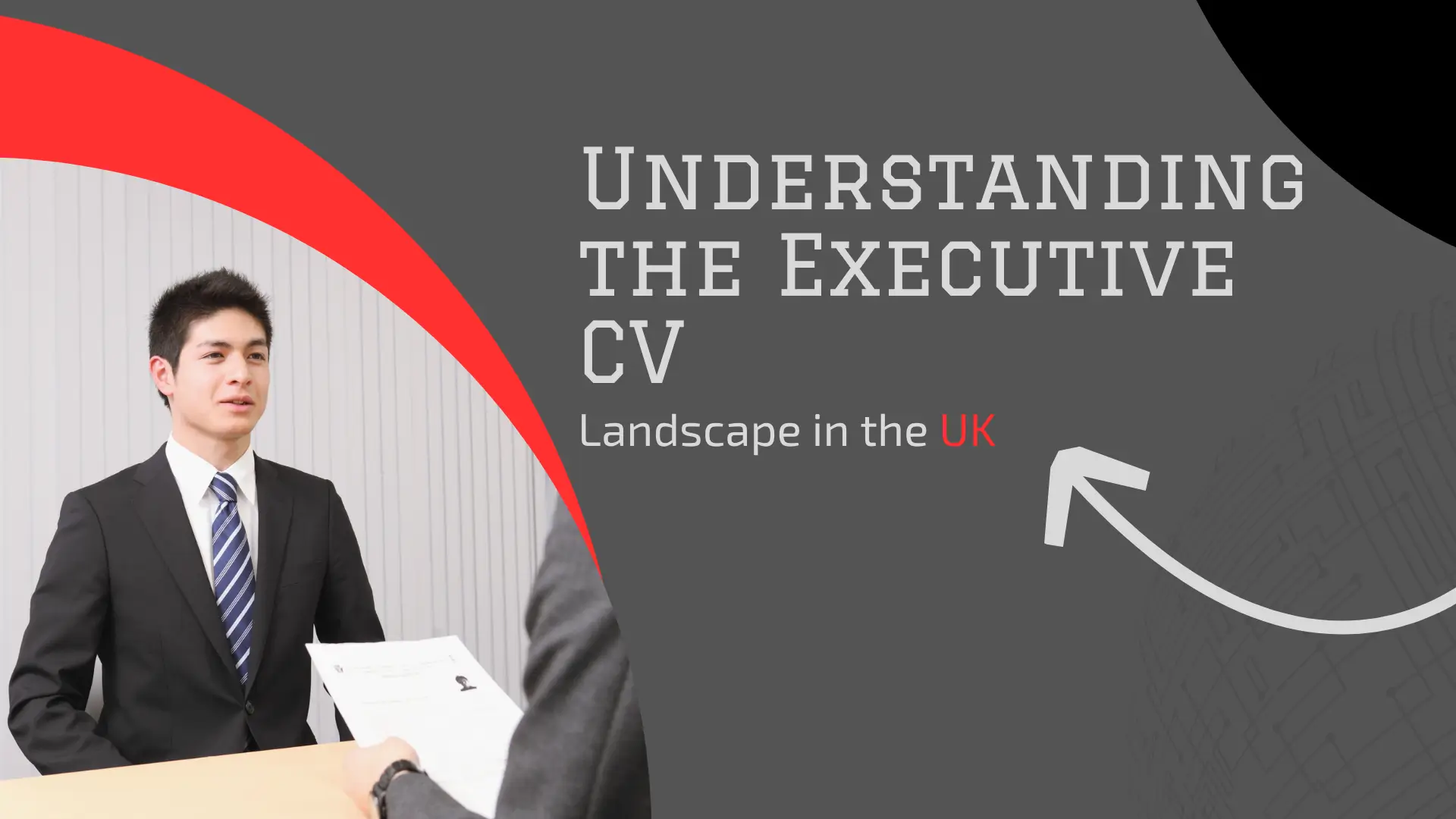What Defines an Executive CV?
An executive CV is more than a list of job titles; it’s a strategic document that reflects your leadership journey, achievements, and potential. Unlike standard resumes, executive CVs focus on:
- Strategic Leadership: Demonstrating your ability to drive organizational change and set long-term goals.
- Quantifiable Achievements: Highlighting measurable outcomes that showcase your impact.
- Industry Expertise: Showcasing deep knowledge and experience in your sector.
- Executive Presence: Reflecting qualities that align with senior leadership roles.
Why Is a Tailored CV Crucial for Senior Roles?
Senior roles in the UK, such as directors and C-suite positions, require candidates to exhibit a blend of strategic thinking, operational expertise, and leadership acumen. A tailored CV ensures that your experience aligns with the expectations of these roles, increasing your chances of securing interviews.
Structuring Your Executive CV for Maximum Impact
1. Professional Summary
Begin with a concise professional summary that encapsulates your leadership philosophy, key achievements, and career trajectory. This section should provide a snapshot of your value proposition to potential employers.
2. Core Competencies
Highlight your core competencies relevant to senior roles, such as:
- Strategic Planning
- Financial Management
- Stakeholder Engagement
- Change Management
- Team Leadership
These competencies should align with the requirements of the roles you’re targeting.
3. Professional Experience
Detail your professional experience in reverse chronological order, focusing on:
- Achievements: Quantify your impact (e.g., “Increased revenue by 20% within the first year”).
- Leadership Roles: Highlight positions where you led teams or initiatives.
- Strategic Contributions: Demonstrate how your decisions influenced organizational direction.
4. Education and Professional Development
List your academic qualifications and any executive education programs you’ve completed. Include certifications and training that enhance your leadership capabilities.
5. Additional Sections
Consider adding sections that further demonstrate your suitability for senior roles, such as:
- Publications: Articles or papers you’ve authored.
- Speaking Engagements: Conferences or panels where you’ve presented.
- Awards and Recognitions: Industry accolades or honors.
- Languages: Proficiency in multiple languages.
Key Strategies for Crafting a Standout Executive CV
1. Emphasize Leadership and Strategic Impact
Senior roles demand leaders who can drive change and deliver results. Use your CV to showcase instances where you’ve led initiatives that resulted in significant organizational improvements.
2. Quantify Achievements
Recruiters and hiring managers value measurable outcomes. Whenever possible, quantify your achievements (e.g., “Reduced operational costs by 15% through process optimization”).
3. Tailor Your CV to the Role
Customize your CV for each application, aligning your experience and skills with the specific requirements of the role. This demonstrates your genuine interest and suitability for the position.
4. Maintain Professional Formatting
Use a clean, professional layout with consistent fonts and headings. Ensure your CV is easy to read and free from errors.
Common Mistakes to Avoid in Executive CVs
- Overloading with Information: Focus on quality over quantity; highlight the most impactful achievements.
- Using Generic Language: Avoid buzzwords and clichés; be specific and authentic.
- Neglecting Tailoring: A generic CV may not resonate with recruiters; tailor your CV to each role.
Trends Influencing Executive CVs in 2025
- Increased Use of AI in Recruitment: Employers are leveraging AI to screen CVs, making it crucial to optimize your CV for Applicant Tracking Systems (ATS).
- Emphasis on Digital Skills: Proficiency in digital tools and platforms is becoming increasingly important for senior roles.
- Focus on Diversity and Inclusion: Demonstrating a commitment to diversity and inclusion can enhance your appeal to prospective employers.
Conclusion
Crafting an executive CV that resonates with UK recruiters requires a strategic approach that highlights your leadership, achievements, and alignment with the role. By focusing on quantifiable results, tailoring your CV to each position, and avoiding common pitfalls, you can create a compelling document that opens doors to senior leadership opportunities.
Call to Action: Ready to take the next step in your career? Consider seeking professional CV writing services to ensure your executive CV stands out in the competitive UK job market.
FAQs
1. How long should an executive CV be?
An executive CV typically spans two pages, focusing on relevant experience and achievements.
2. Should I include a photo on my executive CV?
In the UK, it’s generally not necessary to include a photo unless specified by the employer.
3. How can I make my CV stand out to recruiters?
Highlight quantifiable achievements, tailor your CV to each role, and ensure it’s free from errors.
4. Is it important to include a personal statement?
Yes, a concise personal statement can provide insight into your career objectives and suitability for the role.
5. Should I list all my previous roles?
Focus on positions relevant to the role you’re applying for, emphasizing achievements and responsibilities.
6. How can I demonstrate leadership skills on my CV?
Provide examples of initiatives you’ve led, highlighting outcomes and impact.
7. Is it necessary to include references?
References are typically provided upon request; it’s not necessary to include them on your CV.
8. How can I optimize my CV for ATS?
Use standard headings, include relevant keywords, and avoid complex formatting.
9. Should I include hobbies and interests?
Only include hobbies if they add value or demonstrate skills relevant to the role.
10. How often should I update my CV?
Regularly update your CV to reflect new achievements, roles, and skills.
Final Checklist:
- Ensure CV length is appropriate (typically two pages).
- Highlight quantifiable achievements.
- Tailor CV to each role.
- Maintain professional formatting.
- Avoid common CV mistakes.
- Stay updated with industry trends.
By adhering to these guidelines, you can craft an executive CV that effectively showcases your qualifications and positions you for success in the competitive UK job market.

